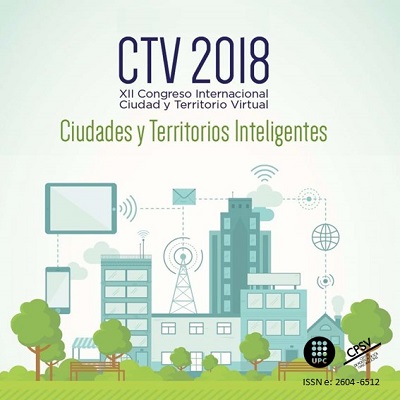Rome outskirts. Multidisciplinary survey on the transformation of settlement models
DOI:
https://doi.org/10.5821/ctv.8235Keywords:
outskirt, settlement models, land uses, territorial analysis, urban regenerationAbstract
The outskirt phenomenon is modern; it was born during the nineteenth century.
The traditional definitions, however, are unsuitable to describe today the complex dynamics that involve large (and less large) urban areas. Therefore, to speak about outskirt it is necessary to review the meaning of this word and investigate the contemporary urban peripheries from different perspectives.
The study of territorial phenomena has long been the prerogative of various disciplines: urban planning, geography, sociology, anthropology, economics, etc. are among those that have contributed to enriching the heritage information on city and territory. Above all, as regards the phenomenon of suburbanization, at their base there is a clear cultural component. The challenge that arises today is that of integration between data and sharing platforms. The goal is to build a permanent information baggage able to support policy choices and intervention strategies. This study integrates the approach of Urban Studies with that of Urban Geography, superimposing techniques for reading urban phenomena based on geographical tools.
The Roman scene is a rich box of outskirts, different and uneven, often the scene of a widespread degradation. They arise, in most cases, since the end of the World War II and growing until today, only in part following the overall design of urban plans. In Rome, the discomforts of the new peripheral neighbourhoods, principally designed by the 1965 Urban Plan consist in difficulties of mobility and traffic congestion, distribution inhomogeneity and scarcity of public services and an overall dilation of distances and displacements. Today´s result is a mosaic with many missing pieces, urban fragments that produce spatial fragmentation and where only sporadic cases of spontaneous mobilization by groups of citizens have correct the factual situation, partially redeveloping the outskirts concerned.
The expansion of Rome towards the sea went through the last century. This area over the decades following the end of World War II has become an immense outskirt that has reached more than 120,000 inhabitants in an area five times larger than the nearest city of Ostia Lido (which, however, has just under 100,000 inhabitants) and a population density that does not exceed 25 inhabitants per hectare. It is a heterogeneous outskirt, prevalently illegal, that unites the substantial absence of public space of relations, of central places, to the provisional nature that accentuates its peripheral character. In this area the settlement process, after the Second World War, begins due to basic needs- living, working, etc. -, however between the Fifties and Sixties of twentieth century it began to change its characters towards the North American model of the Suburb. During thirty years the concepts of living, of city and of outskirt have been transformed. But this phenomenon is accompanied by a sensitive decay of the quality of life and, consequently, of the environment.
The land use analysis has confirmed this change, returning a peri-urban / suburban settlement model with low or very low density, where a very low number of inhabitants are opposed to a significant land consumption. Therefore, to intervene in the outskirt implies an opinion about the outskirts that is substantially different from the feeling of those who live there. For them, this model of city is not necessarily negative but has a series of urban planning problems related to mobility, the public services, urban security, etc.
The essay will indicate the different options for urban regeneration of contemporary suburbs. It will range from the Theoretical grid (Vittorini, 1988; Cerasoli, 2008), an instrument of rehabilitation of the peripheries finalized to the reorganization of the spatial structure, whose elements are the quality of the public space of relation, the permeability of the urban structure and the complexity of the uses. Up to considerations that arise from the recent teachings of Serge Latouche, theoretician of the economy of degrowth, of Zigmund Bauman, who introduced the concept of liquid society, until arriving at the Encyclical Laudato Si’ of Pope Francis, that is a treaty of sustainable territorial policy.
























